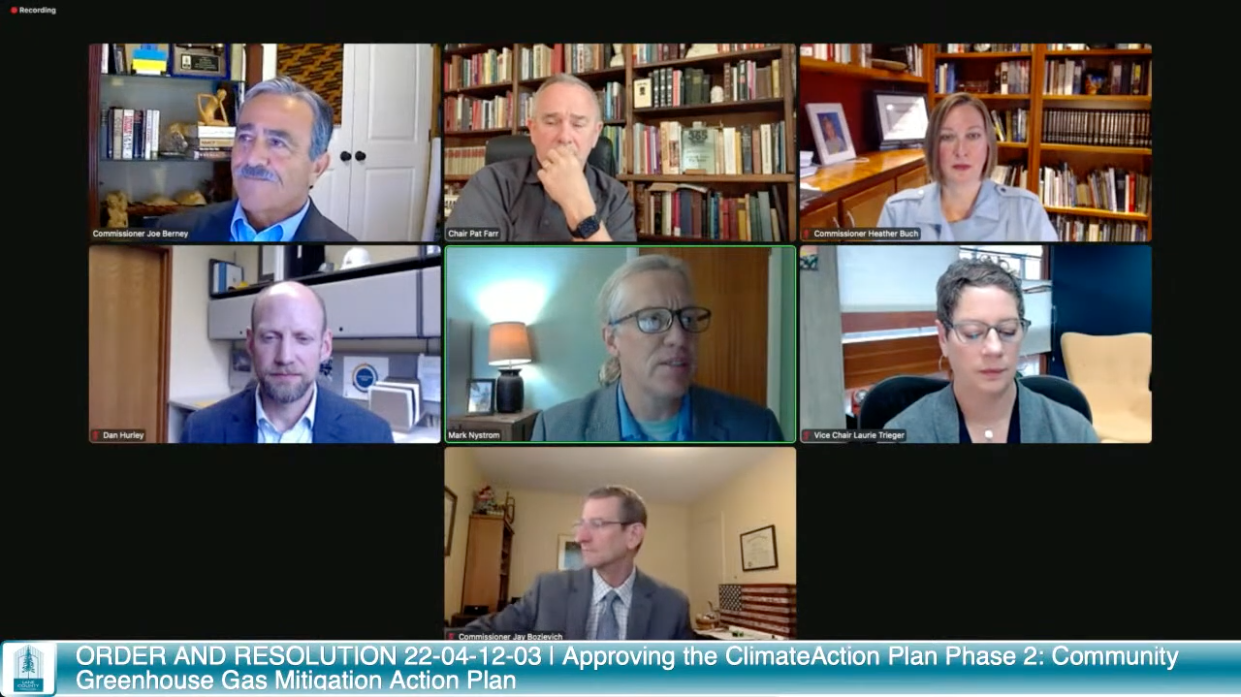Less than two weeks before Earth Day, the Lane County Board of Commissioners OK’d a plan on April 12 that could cut the county’s greenhouse gas emissions and help meet its 2040 emissions goal.
The commissioners voted 4-1, with Commissioner Jay Bozievich dissenting, to approve the plan that creates a pathway to encourage electric vehicle adoption, make the Short Mountain landfill a renewable energy and recycle hub, and support the community in reducing greenhouse gasses. Although the plan has specific actions, the commissioners said throughout the meeting that it is a living plan that can be tweaked as technology improves.
Much of the April 12 meeting policy debate was whether the regional electric grid can satisfy the demand for an increase of electric vehicles.
“This plan is a significant step forward for Lane County that reflects years of preparation,” Board Chair Pat Farr said in an April 18 press release. “The plan provides a broad framework for reducing greenhouse gas emissions while addressing needs of businesses and low-income residents. We believe the plan provides us the flexibility to focus on greenhouse gas reduction strategies that can create a healthier, more sustainable Lane County.”
The road to the greenhouse gas mitigation plan began in 2019 when Lane County worked with Eugene-based Good Company to create an inventory of its greenhouse gas emissions, said Mark Nystrom, Lane County climate strategist, at the April 12 meeting. According to the inventory, Lane County government-related transportation contributes to more than 66 percent of emissions and building energy emits 21 percent.
The county’s plan targets 70 percent of the emissions reductions to meet its 2040 goal. According to the meeting materials, the remaining 30 percent will come as more technologies or strategies are developed over time. The largest impact in greenhouse gas emissions will happen with the county’s 100 percent adoption of electric vehicles and R99 renewable diesel for its fleet.
Bozievich, the most conservative commissioner on the board, spoke critically about the plan, saying a reliance on electric vehicles will increase the demand on the electrical grid, which could cause a problem. He quoted EWEB’s statement on electric vehicles that says to avoid grid issues, an increase of electric vehicles means customers will need to wait until off-peak hours — after 10 pm or at noon— to charge their vehicles.
Commissioner Joe Berney said the data that Bozievich was relying on was out of date and the 2021 draft plan by the Northwest Power Council was not concerned about supplying enough power for electric vehicles. “I don’t question the commissioner’s statement, but I want to share my lived experience,” Berney added, referencing a building built in Los Angeles by a company he previously owned before being elected to the county commission in 2018. “When we were developing the country’s largest net-zero plus facility corporate campus, the technology for batteries had increased so much and the price decreased so much.”
Berney added that software technology is being developed that can manage how batteries are used and charged.
The greenhouse gas reduction plan is being released at a time after advocates have pressed the Eugene City Council to start the process of parting ways with natural gas and support the electrification of buildings in town.
The county plan doesn’t include a ban on natural gas in residences and commercial buildings, Lane County Public Works Director Dan Hurley said, because the county doesn’t have that authority, unlike the cities in Lane County. The plan does have a strategy to increase electrification, he added, “because electric heating and cooling is clearly the lower emissions alternative at this time.”
Throughout the discussion, commissioners mentioned that the plan is a living document that can change over the years with technology upgrades and energy sources change, such as the supply of hydropower in the Pacific Northwest decreases.
“As the balance of distribution of power is honed, the document will change,” Farr said.
